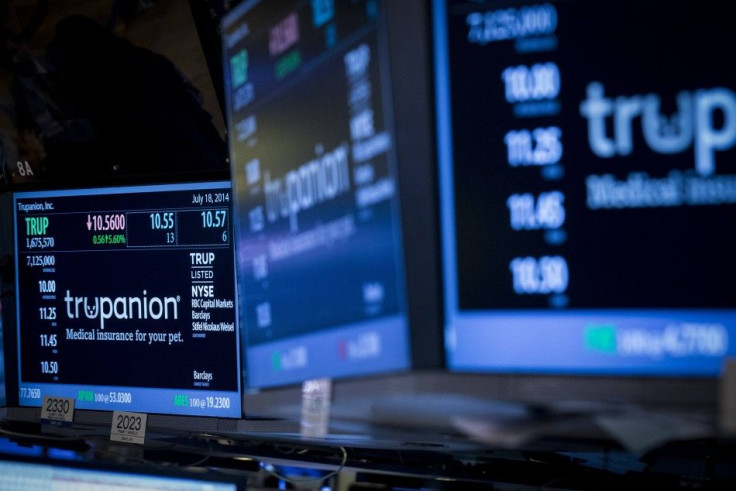Don’t Sell Stocks With High PE Ratios, Stock Market Expert Advises

Brisbane Times columnist Marcus Padley identified on Monday some 26 stocks in the Australian Stock Exchange (ASX) 200's industrial sector and listed shares that investors consider vulnerable because of their high price-to-earning (PE) ratios.
Based on his cut-off criterion of a PE that is 20 times or higher, Padley made a list of 26 such stocks. At the same time, he cautioned owners of stocks with PE ratios over 20 not to sell them. Since these stocks collectively "make up a rather fantastic growth portfolio and the average return before dividends from this list over the past 12 months is 26.7 per cent," Padley urged shareholders to be more careful in disposing of such kinds of stocks, which he said, is comparable to throwing babies with the bath water.
Included in the list are Domino's Pizza 40x, Seek Ltd 31x, Ramsay Health Care 29x, Carsales.com 28x, Aristocrat Leisure 27X OzForex 24x, Qube Holdings 24x, CSL Ltd 24x, Boral 26x, James Hardie 24x, TPG Telecom 24, Veda Group 24x, Invocare 24x, G8 Education 24x, Brambles 23x, ResMed 22x, Aveo 22x, Cover-More Group 21x, ARB Corporation 21x, Village Roadshows 21x, Computershare 22x, Breville Group 12x, Iress Ltd 20x, Wesfarmers 20x and Virtus Health 19x.
He cited a theory that to make money in the stock market, the investor should not assess stocks on their price but to buy the most expensive since they appear to be the best "or they would not be sitting on such high PEs." Padley added that he believes an investor stands to make more money by purchasing the 10 stocks with the highest PEs than the 10 lowest-PE stocks.
However, Padley clarified that the current PE does not provide the owner with enough information to make a better informed decision on what to do with his stock since it only tells "how highly the market rates the quality and growth of those earnings."
He added the PE is a useful rating system that separates quality stock from the trash ones.
Citing the case of Domino's Pizza, which topped the list with a 40x PE ratio, Padley said the pizza maker's stock is still cheap if its growth is high and the PE is back to 20 times in a couple of years. However, analysts forecast that Domino's return on equity would likely remain higher than 40 per cent in the next few years and its PE would return to 23 times.
What really matters, he said, is not the current PE but its trend in the coming years. He emphasized that stocks with the highest PEs are also often those with the highest return on equity, highest earning growth, but with the most rapid reduction in PE in the year ahead.
Similar advice was offered by Angel Clark of Seeking Alpha, who ranked stocks listed on the American, Nasdaq and New York Stock Exchanges with the 100 lowest P/E ratio worth at least $10 and with a 500,000 minimum average (50-day) number of shares traded.
Clark's findings were that the highest PE stocks significantly outperformed the lowers PE stocks four of the eight years tested, while the lowest PE stocks only outperformed in two of the eight years.
He stressed that the information does not encourage buying the highest PE stocks, but to show the little correlation between low PE ratios to long-term profitability or substantial increase in number of winners when used alone.
The same principle applies to PE ratios of stocks from other bourses.
The two columns are among the many in the online world that offers investor education.
Another source of investor education is Red Bank, New Jersey-based investment education company InvestView (OTCQB: INVU).
InvestView, Inc. provides and delivers a comprehensive online program of investor education: proprietary investor search tools and trading indicators, weekly newsletters as well as access to live weekly Trading Rooms. It delivers subscription-based financial education courses through InvestView's web site. InvestView also allows new retail investors to use the portal's subscriber information on a 2-week trial period for $9.95.
The company does it through its online education, analysis and application platform that provides analysis, tools, education solutions and an application. InvestView's web-based tools were designed to simplify stock research and improve the investor's research efficiency. One such tool is the Market Point, which is made up of five sections, namely: Charts, Stock Watch, Market, Calendar and Campus.
InvestView offers five training courses that provide an incredible education in the stock market. The five InvestView courses build upon each other. Beginners should take them in the suggested sequence, while more seasoned traders may jump right into the more advanced topics that they are craving to better understand and give them the edge as a successful trader. Each course is offered via live webinar and as a recorded on-demand videos that is immediately posted at the end of each webinar. For more information, please visit their web site.




















